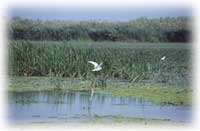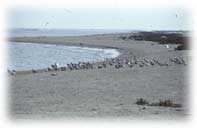

INTRODUCTION | HISTORY | CULTURE | NATURE | ALIVE DELTA | LOCAL CUISINE
![]()
 Get acquainted with the bright culture of the Lower Danube! Hear the songs of the nations living here and join their fiery dances in!
Get acquainted with the bright culture of the Lower Danube! Hear the songs of the nations living here and join their fiery dances in!

 Lower Danube has been famous for its wines for a long time. Made out of different sorts of grapes being warmed by the tender Southern sun, they just wouldn’t leave you unimpressed after you have tasted them! Come and taste them!
Lower Danube has been famous for its wines for a long time. Made out of different sorts of grapes being warmed by the tender Southern sun, they just wouldn’t leave you unimpressed after you have tasted them! Come and taste them!
![]()
 In this section you would find the info on tourist itineraries and the description of the complex of services offered.
In this section you would find the info on tourist itineraries and the description of the complex of services offered.
 Ukrainian Lower Danube stretches from the point where the last tributary of the Prut River flows into the Danube and down to the Black sea. Various and very attractive natural complexes are located on that rather small territory. Those are reed “plavni” (wetlands), an extensive system of the Delta arms, big freshwater lakes, riverbed woods winding their way into the delta, steppe salt-marshes and the Black Sea shore line. The Danube is the second biggest river in Europe after the Volga. The Danube is
also unique in being the muddiest river in Europe. Each year it brings about 80 million tons of fertile silt into the Black Sea.
Ukrainian Lower Danube stretches from the point where the last tributary of the Prut River flows into the Danube and down to the Black sea. Various and very attractive natural complexes are located on that rather small territory. Those are reed “plavni” (wetlands), an extensive system of the Delta arms, big freshwater lakes, riverbed woods winding their way into the delta, steppe salt-marshes and the Black Sea shore line. The Danube is the second biggest river in Europe after the Volga. The Danube is
also unique in being the muddiest river in Europe. Each year it brings about 80 million tons of fertile silt into the Black Sea.
 The Danube flows into the Black Sea with three arms - the Kiliya, the Sulina and the Georgievsky arms. Three Danube arms form the large delta on the territory of two countries of Ukraine and Romania. The Kiliya arm flows along the territory of Ukraine, and at Vilkovo it splits forth into numerous channels, forming its youngest and most dynamic Kiliya delta which advances 40-50 meters into the sea every year.
The Danube flows into the Black Sea with three arms - the Kiliya, the Sulina and the Georgievsky arms. Three Danube arms form the large delta on the territory of two countries of Ukraine and Romania. The Kiliya arm flows along the territory of Ukraine, and at Vilkovo it splits forth into numerous channels, forming its youngest and most dynamic Kiliya delta which advances 40-50 meters into the sea every year.
 The considerable area of the Lower Danube region is covered with reed wetlands. A picturesque line of riverbed woods stretched along the Danube. Beautiful lakes, like a necklace, scattered along Kiliya arm from the very border with Moldova and down to the Black Sea. Those are the lakes of Kagul, Yalpug, Kartal, Kougourlui, Katlabukh and Kitay, each of them being unique, picturesque and worth seeing.
The considerable area of the Lower Danube region is covered with reed wetlands. A picturesque line of riverbed woods stretched along the Danube. Beautiful lakes, like a necklace, scattered along Kiliya arm from the very border with Moldova and down to the Black Sea. Those are the lakes of Kagul, Yalpug, Kartal, Kougourlui, Katlabukh and Kitay, each of them being unique, picturesque and worth seeing.
Kiliya Delta is a unique formation itself. Throughout the centuries it had been accumulating the fertile silt, and nowadays it is a land giving the local people rich harvests of fruit and vegetables.
 Lower Danube region has rich flora and fauna. Lower Danube landscapes are equally beautiful all year round: in spring one enjoys a green uproar of herbs, grass and flowers; in summer - one is fascinated by the bright sunny flower-fruit bouquet with the fragrance of the steppe and the sea; in fall - one is enchanted by the splendor of autumn air filled with the aromas of water-melons, apples and grapes; in winter - one is takes delight in the changeable, either snowy or rainy, or sunny valleys, woods and steppes- as various as the life itself.
Lower Danube region has rich flora and fauna. Lower Danube landscapes are equally beautiful all year round: in spring one enjoys a green uproar of herbs, grass and flowers; in summer - one is fascinated by the bright sunny flower-fruit bouquet with the fragrance of the steppe and the sea; in fall - one is enchanted by the splendor of autumn air filled with the aromas of water-melons, apples and grapes; in winter - one is takes delight in the changeable, either snowy or rainy, or sunny valleys, woods and steppes- as various as the life itself.
Wetland systems of more than 5,000 square km produce a huge amount of oxygen and absorb the accumulated carbonic gas from the atmosphere during the photosynthesis. This natural “air conditioner” influences the climate formation on the territory of the whole central Europe. The scope of such a biological activity can be compared with the processes taking part in the most productive parts of the Earth - tropical rainforests and coral reefs.
GO TO WHERE YOUR HEART DESIRES TO BE - LEAVE YOUR CARES BEHIND AND IMMERSE
INTO THE WORLD OF THE LOWER DANUBE!
NAVIGATION: HOME PAGE >> ABOUT LOWER DANUBE >> NATURE
Design, support: IncomSoft © 2003-2013 >Gassib-ug